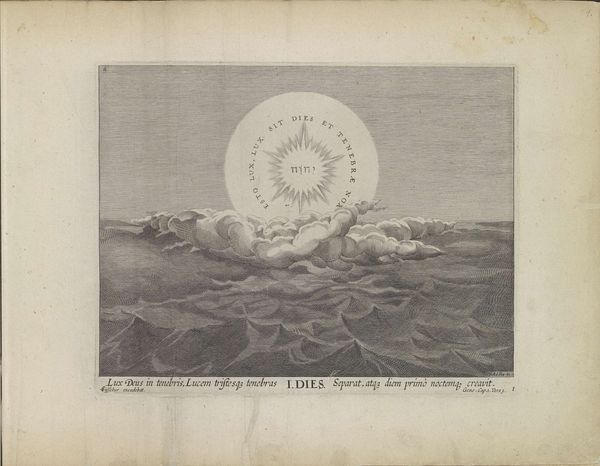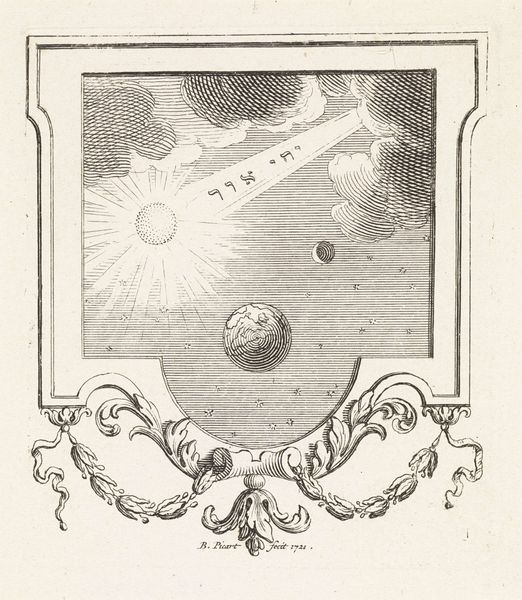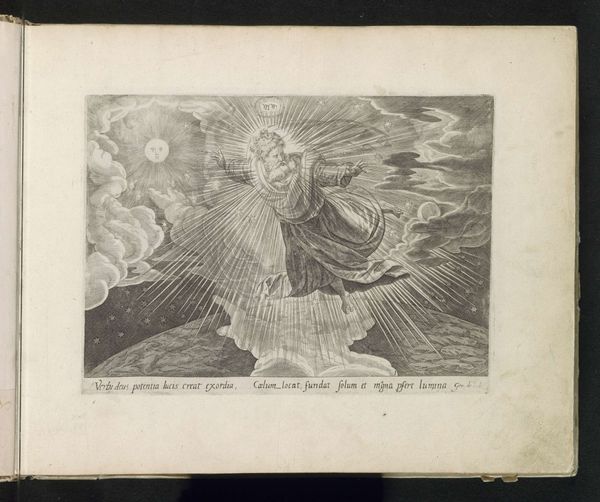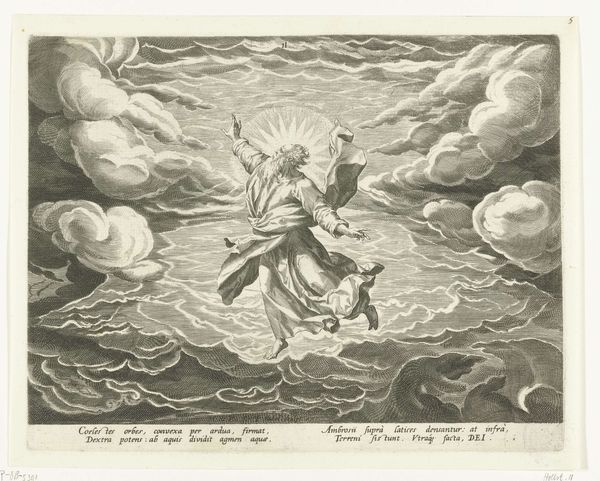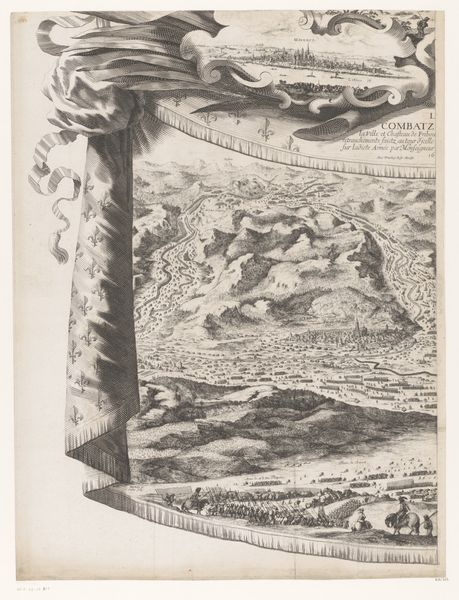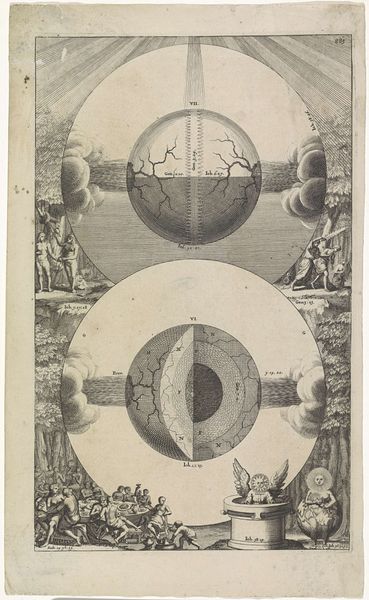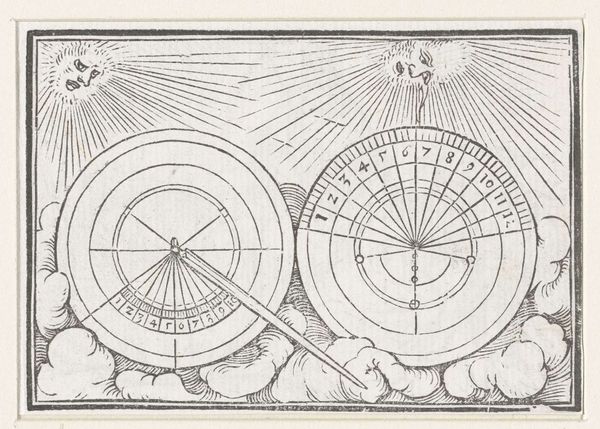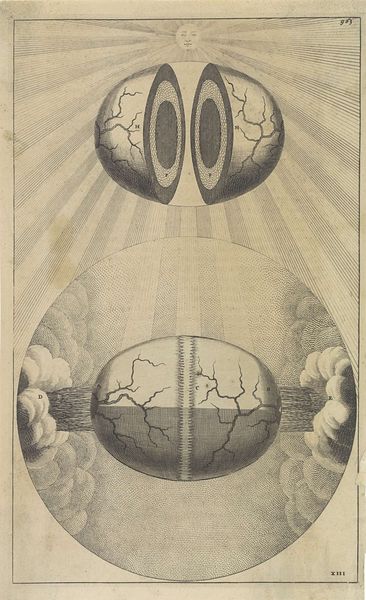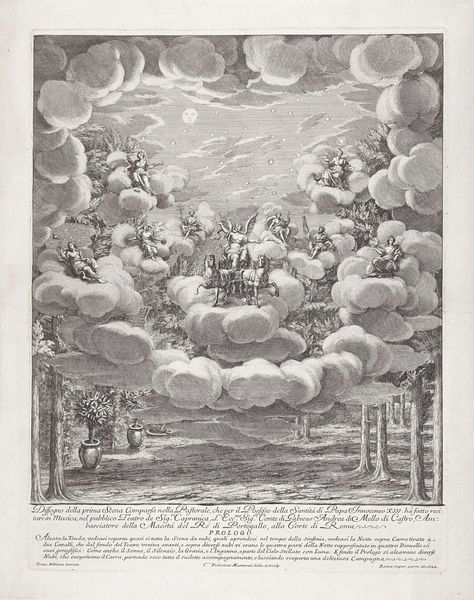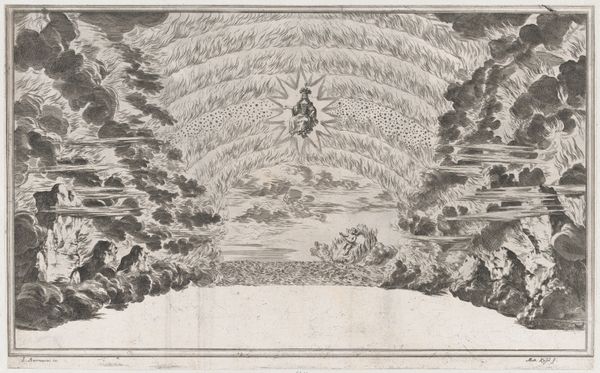
Dimensions: height 198 mm, width 252 mm
Copyright: Rijks Museum: Open Domain
Editor: Here we have "Tweede scheppingsdag: scheiding tussen de wateren," or "Second Day of Creation: Separation of the Waters," an engraving and etching from between 1639 and 1643. I'm struck by the dramatic light emanating from the center – almost blinding! What story does this image tell you, from a historical point of view? Curator: This print offers a window into the cultural and religious landscape of the 17th century. Consider the Protestant Reformation’s impact. Visual representations of biblical narratives gained importance. How do you think the widespread availability of prints like these affected religious understanding? Editor: It must have given people a much more direct and personal way to engage with scripture! Instead of just hearing it from the church, they could contemplate the images themselves. But I wonder, did it also become a way to promote specific interpretations of the Bible? Curator: Precisely. The imagery, line work, and inclusion of text could guide the viewer towards a particular understanding. It subtly reinforces prevailing theological perspectives within its contemporary Dutch society. The placement of text, divine language, almost floating above the chaos. What does it communicate? Editor: It's like God’s word is actively ordering the universe. It's less about just illustrating a scene, and more about asserting the power of religious dogma. Curator: Exactly! The distribution of prints like this helped solidify not just the biblical story but also social values linked to that narrative in homes across different societal levels. We are not simply observing a landscape or biblical event; rather we observe a projection of cultural power relations. Editor: That makes me rethink the artist's choices here. It is more complex than a simple depiction. Thank you for sharing this lens. Curator: And thank you. Seeing this work through the eyes of a future art historian makes me hopeful for new understandings of the relationship between art, history, and public life.
Comments
No comments
Be the first to comment and join the conversation on the ultimate creative platform.
